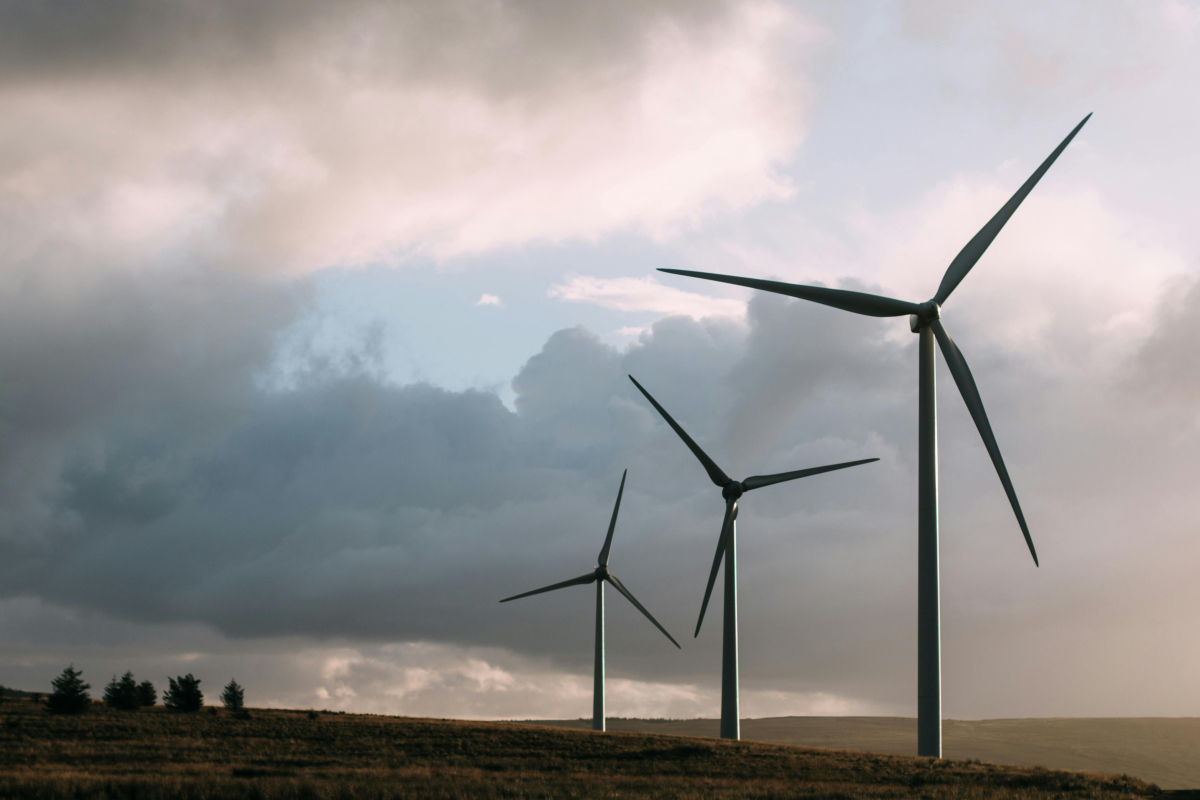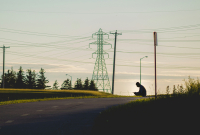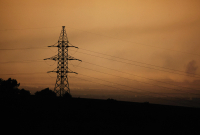Remarkable growth is possible in Alberta — if only

Investments in renewable energy such as wind have seen growing earnings over the past 10 years due to steadily decreasing cost of capital across the globe. Photo by Sam Forson/Pexels
In 1993, the first commercial wind farm in Alberta was built at Cowley Ridge. It was a small operation that contributed minor amounts of electricity to the provincial grid. The now-outdated powerplant ushered in an era of exponential growth in renewable energy development in the intervening decades.
Alberta has experienced the fastest growth of renewable investments, accounting for 75 per cent of new national investments last year, while propelling the energy source to generate nearly a third of the province’s electricity output today. This has created a boon of international investments, job creation and cheaper energy for consumers, along with valuable tax revenue for rural municipalities. However, under a new set of regulations Cowley Ridge might not have been built today.
These new regulations, announced in February, place restrictions on soil quality requirements and “buffer-zones” around pristine viewscapes that renewable energy generation projects need to comply with.
The regulations put an end to a six-month moratorium placed on new project permits, which took the industry by surprise. The lifting of the moratorium was a step in the right direction, but Jordan Dye, the director of the Business Renewables Centre-Canada, writes that the new regulations are a set of undefined rules that only apply to wind and solar projects but not fossil fuel, creating unnecessary red tape in the industry. He claims the policies are too vague and subjective, which will lead investors to question the viability of financing new projects in Alberta.
The Alberta government is justifying the new regulations on the grounds that large wind farms are putting agriculture yields at risk, while also spoiling the province’s pristine landscapes for tourism. Alberta Premier Danielle Smith has also raised a concern over the variability of wind and solar generation, claiming that it cannot be the foundation of a dependable electricity grid.
The Alberta Utilities Commission released a report stating that the new regulations would not have material consequences on future wind projects, given that the impact areas are not in ideal weather conditions.
However, Simon Dyer, deputy director at the clean energy think-tank Pembina Institute, maintains that the new regulations would disqualify three-quarters of Southern Alberta from wind projects. Investors, already spooked by the six-month moratorium, may not find solace in the new regulations, which call into question the viability of future renewable investments. This may in turn lock local jurisdictions out of tax revenue, jobs and cheaper electricity into the future.
So, is this policy a good idea? A look at other markets can provide insight.
The economics of renewables
Beyond the generation of clean and cheap electricity, renewables have become a major job creator in Alberta, employing more than 10,000 people today and continuing to grow at over 10 per cent per year. By contrast, oil and gas has become stagnant.
Comparative markets are witnessing similar gains from renewable investments, as a report by the UK Energy Research Centre finds that the same investment in the renewable energy sector created three times as many jobs as in the oil and gas sector. Another study from the U.S. indicated that the wages in the renewable energy industry are on par with oil and gas jobs nationally.
The International Energy Agency (IEA) indicates that global capital is becoming greener, as clean energy investments are on a trajectory to double those of fossil fuels, which have remained relatively stagnant over the past 10 years. This development is driven by ambitious targets set by the EU and U.S. to transition away from fossil fuels. The trend should give pause to equity holders within these industries as expectations are changing for the future profitability of oil and gas.
Backed by abundant global capital, renewable energy investments have also experienced growing earnings over the past 10 years due to steadily decreasing cost of capital across the globe, barring a short-term spike driven by the recent rise in interest rates that affected all industries.
What about grid stability?
Danielle Smith has also raised concerns about blackouts being caused by an electricity grid that has a high proportion of intermittent renewable generation. However, subsequent investigations have indicated that the blackouts were actually a result of the extreme weather impact on the unprepared delivery systems of all energy sources, including fossil fuel-based thermal generation. This concern stems from blackouts that have occurred elsewhere during extreme weather conditions — particularly in Texas, where millions of people lost power for extended periods while incurring billions in property damage. The state relies on renewables for up to 30 per cent of its energy generation, casting doubt over the ability of wind and solar to provide grid stability.
The events led to more stringent regulations to improve the states’ energy infrastructure. Luckily, the Canadian grid is more weather-resistant, because it has been designed to handle winter conditions.
There are also many states with much higher renewable energy generation, sustaining the high proportion of wind and solar through prudent energy management and storage practices.
Iowa, for instance, received 55 per cent of its energy from wind in 2023 and has been introducing novel methods of energy management and storage that can be implemented in proportion to the increase in renewable generation. Such practices are expected to create more stable and efficient grids than before, as demonstrated during the 2021 Texas blackout, where wind outperformed natural gas generation consistently during the winter storm.
A way forward
Alberta is a naturally windy and sunny province and its deregulated energy market creates one of the country’s most profitable destinations for renewable energy projects. Given the uncertainties around the future of oil and gas investments and the volatility of global oil prices, the Alberta economy is overly exposed to risk factors that are out of its control, which creates significant risk to the economic health of the province.
Therefore, the government should address the concerns caused by its new policies through engagement with the investment community and encourage the renewable energy sector to continue its remarkable growth, while working alongside industry to facilitate the development of novel energy storage and management solutions. This will drive long-term prosperity for the entire province through cheaper electricity, job creation, tax revenue and economic diversification, which seems like a no-brainer.
Donald MacCallum has a passion for working with organizations that promote economic solutions to climate adoption and awareness through collaboration with industry, academia and government. He currently works at DIANA, a NATO body that supports start-ups advancing sustainable and responsible technology development, with previous experience at S&P Global and the United Nations Capital Development Fund. He is also a member of several Calgary-based NGOs, focused on developing sustainable climate action.






Comments
A very infirmative article that intelligently summarizes all the salient points. Many thanks.
"...informative..."
"These new regulations, announced in February, place restrictions on soil quality requirements and “buffer-zones” around pristine viewscapes that renewable energy generation projects need to comply with."
Funny how Danielle Smith's corrupt oil & gas buddies are not subject to the same restrictions. I guess Smith thinks the dirty tar sands, tailing ponds and abandon oil wells are pristine viewscapes. The new regulations were clearly for the benefit of the corrupt industry to protect their excessive wealth and profits. After all, the execs need larger houses, larger yachts, and expensive cars to satisfy their decadent & excessive life styles.
Orwell lives. The handles "clean coal" and Truth Social demonstrate inverted thinking where just one word placed in front is supposed to remove prevalent pollution and lies. And Smith also has her filthy hands on the Alberta education and healthcare systems, busily twisting them into new forms, her own attempts at sculpture.
There is nothing free or enterprising about any of it.
If only we had Alberta leadership that a. Believed in science; B. Wasn’t paranoid about the Canadian federal government. C. Didn't have to have the Premuer personally approve every investment, research grant or future energy development that might adversely affect Alberta’s fossil fuel industry which has not only captured the UCP and conservative parties but our bureaucracy as well.
I'll basically post a repeat in this column of another comment on Alberta today. Alberta is one of the few places that really are doing R&D for the green energy future. Eavor energy just had a very successful pilot plant for geothermal generation. Their California competitors, Fervo, have shown that fracked geothermal wells can also be used for *storage*, by pumping pressure into them, which is really huge.
Eavor is now going on to a commercial plant - but in Germany, alas, when Canada should be jumping to take the lead on this technology.
Nenshi should found his campaign on taking Alberta into the energy future, remaining at the forefront BY finding the alternatives to gas.